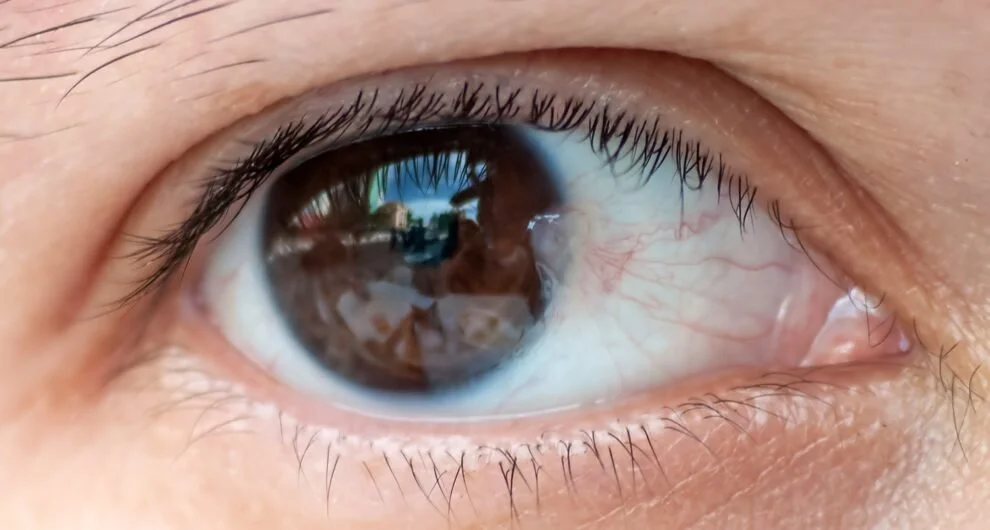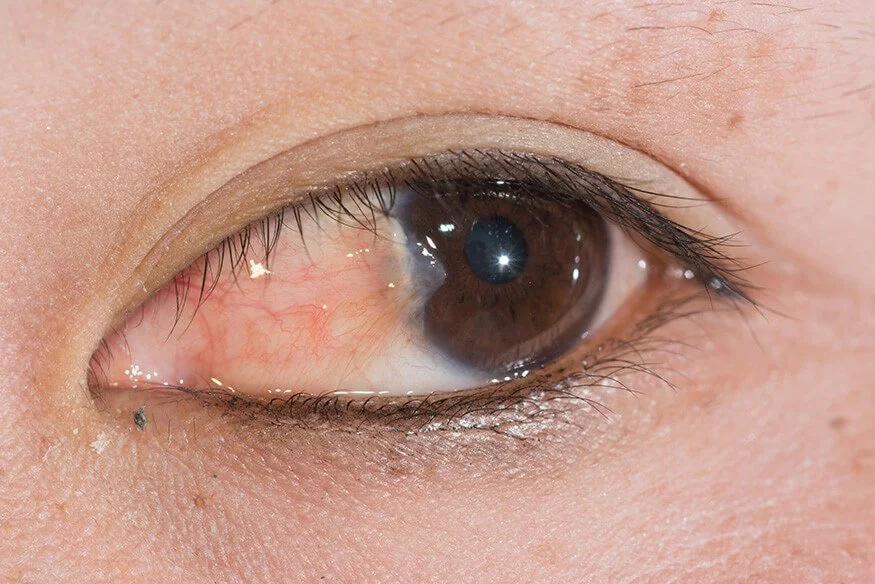Pterygium Surgery without Stitches
What is a Pterygium?
A pterygium is a fleshy tissue growth that develops on the conjunctiva, the clear membrane covering the white part of the eye. They extend onto the cornea, the transparent window at the front of the eye. This abnormal growth, often referred to as “surfer’s eye”, is strongly linked to long-term exposure to ultraviolet light, hot and dry weather, and environmental factors such as dust and wind.
Australia, especially regions along the pterygium belt, has one of the highest rates in the world due to its sunny climate and outdoor lifestyle. Prolonged exposure to UV radiation causes changes in the conjunctiva tissue, triggering the growth of abnormal blood vessels and fleshy tissue that can affect both appearance and eye health.
Environmental Factors and Causes of Pterygium
The development of a pterygium is strongly influenced by excessive exposure to the sun’s ultraviolet radiation. People who spend a lot of time outdoors—such as surfers, farmers, and outdoor workers—are at particularly high risk.
Other contributing environmental factors include:
Hot and dry weather conditions
Long-term exposure to wind and dust
Living in tropical or subtropical climates
Lack of protective eyewear outdoors
Queensland is considered the pterygium capital of the world. Our beautiful climate is unfortunately PERFECT for pterygium growth. Protecting the eyes from ultraviolet radiation is one of the most important preventive strategies. Buy some sunglasses!
When to Recommend Surgery for Pterygium
Pterygium treatment depends on the size of the growth, the severity of symptoms, and whether vision is affected. An ophthalmologist may recommend surgery if:
The pterygium is causing vision problems or inducing astigmatism
Persistent chronic irritation does not improve with medications
A pterygium is often compared to an iceberg—the part you see on the surface is much smaller than the portion extending beneath the normal tissue. For this reason, pterygium extended removal is essential to reduce recurrence and achieve a long-lasting result. You want your eye to look PERFECT!
Symptoms and Common Features of Pterygium
A pterygium usually appears as a triangular wedge of fleshy tissue extending from the inner corner of the eye toward the cornea. The most common symptoms include:
Persistent redness or inflammation
A gritty, burning, or itchy sensation
Chronic irritation that worsens in dry or windy conditions
Increased tearing or watering of the eyes
Sensitivity to sunlight and ultraviolet radiation
As the growth progresses, the clinical features may include irregular astigmatism, corneal scarring, and vision problems.
How is Pterygium Diagnosed?
A pterygium can usually be diagnosed during a routine eye examination. Your optometrist will carefully assess the growth using a slit lamp, which provides a magnified view of the eye’s surface and cornea.
You can have pterygium surgery to improve the cosmetic appearance of your eye as your eye should look nice and white once it recovers from surgery. If the pterygium is affecting your vision then surgery may be indicated to avoid permanent damage to your vision.
Modern Pterygium Surgery and Techniques
Dr. Cronin performs advanced sutureless pterygium surgery, delivering excellent cosmetic and visual outcomes. Unlike the older bare sclera technique, which had higher recurrence rates, modern surgery involves extended conjunctival transplantation to cover the affected area with healthy conjunctiva tissue. You may see that in some countries an amniotic graft is used for the surgery - this tends to give quite poor cosmetic results.
Key benefits of the modern surgical approach include:
Sutureless technique: Glue is used instead of stitches, making recovery more comfortable.
Improved cosmetic results: Minimal scarring and a natural appearance.
Extremely low recurrence rates: Extended grafting techniques make recurrence extremely rare.
Patient comfort: Yes you will be asleep for your pterygium surgery. Our anaesthetist will ensure you do not remember any of the procedure.
Recovery After Pterygium Removal
After surgery, patients wear an eye patch for the first night to protect the eye, yo duo not need an eye covering after that. It is normal to experience minor irritation, redness, or inflammation; however, these symptoms typically improve quickly with prescribed medications. You will typically only need three or 4 days off work after your operation. You will typically be Abel to drive 2 days after the procedure. If you have your pterygium on a Thursday afternoon you can work Thursday morning, take Friday off and be back at work on Monday morning.
Recovery involves:
Regular use of steroid and antibiotic eye drops to reduce inflammation and keep the eye clean
Avoiding contact lenses until the eye has healed
Protecting the eyes from the sun’s ultraviolet light using sunglasses
Having a responsible adult with you for the first night post-surgery
Most patients notice a significant improvement in comfort and vision within a few days. With modern sutureless methods, recovery is faster and less painful compared to traditional stitch-based procedures.
Preventing Recurrence of Pterygium
Even after successful surgery, there remains a possibility of pterygium recurrence, which can sometimes occur in the same eye. To minimise this risk, ophthalmologists recommend a combination of protective strategies and consistent follow-up care.
To reduce recurrence, patients should:
Wear sunglasses (preferably UV-blocking wrap-around lenses) whenever outdoors
Attend follow-up visits so healing can be closely monitored
Use artificial tears during hot and dry weather to maintain a healthy eye surface
Why Choose Dr Brendan Cronin for Pterygium Surgery in Brisbane
Dr Brendan Cronin is a fellowship-trained corneal surgeon with extensive experience in advanced pterygium surgical treatment, including extended conjunctival autograft and sutureless techniques. These modern methods allow for highly successful outcomes with excellent cosmetic results and extremely low recurrence rates.





